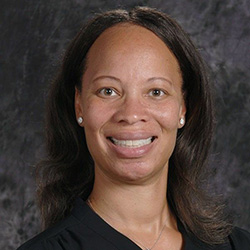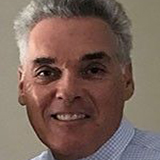In this Article

Cardiovascular tech key takeaways
Are you quick on your feet with a passion for healthcare innovation? Consider a career as a cardiovascular technologist.
Cardiovascular technologists are allied health professionals who treat patients across the continuum of care. They play an essential role in diagnosing and treating heart and blood vessel diseases. Cardiovascular technologists help physicians with cardiac procedures and provide vital diagnostic information.
“This is an in-demand career with a nice salary,” said Michon Revader, Director of the Cardiovascular Technology program at Louisiana State University (LSU) Health Shreveport.
What does a cardiovascular technologist do?
Cardiovascular technologists run tests on patients’ pulmonary and cardiovascular systems. They may spend their shifts diagnosing heart attacks in the emergency room, helping physicians restore blood flow in the cardiac catheterization laboratory or taking images of the heart during follow-up visits.
These health professionals may also diagnose pediatric heart defects or perform serial echocardiograms before and after surgical repair.
After earning their degree and certification, cardiovascular technologists can immediately join the fight against the leading cause of death in the United States: cardiovascular disease.
Cardiovascular technologist job duties
Cardiovascular technologists generally work on their feet.
Common daily duties can include:
There are three main cardiovascular technology specializations to consider:
Cardiac catheterization technologists
are imaging specialists who work with physicians to diagnose and treat conditions of the heart and blood vessels. They may act as surgical assistants by assessing and caring for the patient, controlling instruments or imaging technologies and documenting procedures.
Echocardiography technologists
are medical sonographers who use ultrasound and other soundwave-based tools to capture images of the heart. These procedures are known as echocardiograms.
Vascular technologists
help physicians diagnose and treat health conditions of the vascular system. They may perform imaging and diagnostic tests to assess the patient’s blood vessel anatomy, blood pressure or lung capacity.
No matter the specialization, teamwork is a key part of being a cardiovascular technologist. These allied health professionals must be willing and ready to collaborate with cardiologists, nurses and other healthcare staff.
Skills needed to become a cardiovascular tech
To excel in the role, cardiovascular technologists should have a combination of practical skills and ideal personal attributes to be successful.
Some of the hard skills that are typically developed in an education program include:
Soft skills that are useful for cardiovascular technologists include:
Kevin Early, Director of The School of Invasive Cardiovascular Technology at Trinity Health New England, views compassion as a nonnegotiable.
“I tell my students that when I see a patient, I act as if they are the only patient I have for the day,” Early said. “Even though I may see six or seven of them, the patient is only going to see me once—so I have to take care of them the best I can.”
Cardiovascular technologist salary
According to the 2023 Occupational Employment and Wage Statistics from the U.S. Bureau of Labor Statistics (BLS), the median annual salary for cardiovascular technologists and technicians is $66,170. Income levels may vary based on location, experience and specialization. Cardiovascular technologists with an invasive specialization, for example, tend to earn more than those with a noninvasive specialization. BLS statistics show that the highest-earning cardiovascular technologists may earn over $105,140 per year.
The career outlook in this field is positive with significant growth potential. Employment of both diagnostic medical sonographers and cardiovascular technologists and technicians is projected to increase by 3.7% through 2032, according to the BLS. This is about average growth across all occupations.
There is also plenty of opportunity to advance in the field. As you gain experience or further your education, you may be able to secure a position as a Clinical Cardiovascular Technology Instructor or a Cardiovascular Technologist Manager. Many cardiovascular technologists enjoy these teaching and management positions, as they involve meaningful collaborations with likeminded people.
Education and certifications
How long does it take to become a cardiovascular technologist?
The process of becoming a cardiovascular technologist may vary depending on state requirements or the requirements of any individual employer. There are, however, certain prerequisites to working in this space.
- Minimum requirements:
- You need a high school diploma or equivalent to start a cardiovascular technology degree program.
- Associate or bachelor’s degree:
- Most employers require an associate degree in cardiovascular technology. Others may ask for a four-year bachelor’s degree, so it’s important to consider both options. Aim to focus on programs that satisfy the requirements of the Commission on Accreditation of Allied Health Education Programs (CAAHEP). Note that most cardiovascular technology degree programs start with academic and laboratory work, followed by more specialized instruction.
- Certifications:
- You may need a certification to secure employment as a cardiovascular technologist. The Registered Cardiac Sonographer (RCS) examination is a solid option for those who specialize in noninvasive work. Conversely, if you have chosen an invasive specialization, you may choose to earn the Registered Cardiovascular Invasive Specialist (RCIS) designation. The American Registry for Diagnostic Medical Sonography (ARDMS) and Cardiovascular Credentialing International (CCI) administer most cardiovascular technology credentialing examinations.
- Licensure:
- Some states require a license to practice cardiovascular technology. Be sure to contact your local health department and look online for more information on your state’s specific requirements. States typically require licensure candidates to pass an approved national examination.
Is a cardiovascular technologist career right for you?
Most cardiovascular technologists appreciate their work and succeed in their roles. However, certain traits can make you more likely to excel as a cardiovascular technologist.
“Many of the students who are successful tend to be driven,” said Julie Henderson, Cardiovascular Technology Instructor at St. Cloud Technical & Community College (SCTCC). “These students can handle your average cases, but also turn on a dime and do something drastically lifesaving.”
Some traits in a successful cardiovascular technologist include:
“Cardiovascular technologists are not just performing a procedure,” Henderson said. “We are doing things that are saving people’s lives by saving their hearts.”
This is where emotional strength may come in. Cardiovascular technologists have to navigate urgent situations without compromising the quality of their work.
Of course, not everyone is cut out for the role. Consider the advantages and disadvantages of this career path before becoming a cardiovascular technologist.
Pros of a career in cardiovascular technology:
- High need for qualified professional cardiovascular technologists
- Competitive salary, benefits and opportunity for growth
- Opportunity to directly (and positively) impact patient care
Cons of a career as a cardiotech:
- Demanding work schedule (with varied hours and on-call shifts)
- Physical and emotional challenges
- High levels of stress in certain situations
You’ll also want to keep in mind the need for ongoing education and training. Many cardiovascular technologists value the continuous learning aspect of this career.
Final thoughts
Are you interested in learning more about becoming a cardiovascular technologist? Explore our healthcare programs for more information on how to get started. Take the first step toward a fulfilling career in cardiovascular technology by contacting an admissions advisor today.

Written and reported by:
Maddie Cohen
Contributing Writer

With professional insight from:
Michon Revader, DHA, RRT, RRT-NPS, RCS
Louisiana State University Health Shreveport School of Allied Health Professions

With professional insight from:
Kevin Early, BS, RT, RCIS
Trinity Health of New England

With professional insight from:
Julie Henderson, RCIS
St. Cloud Technical & Community College

